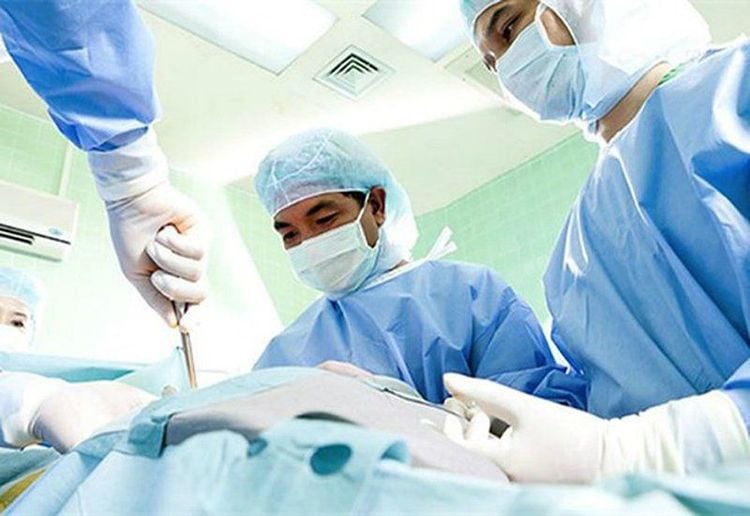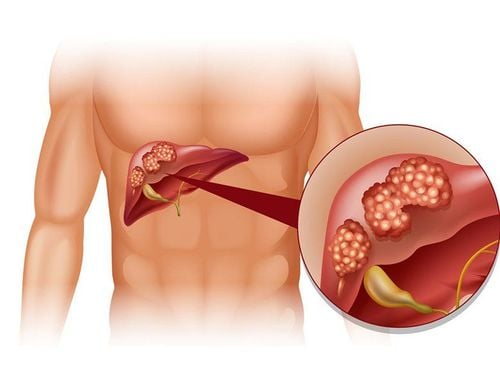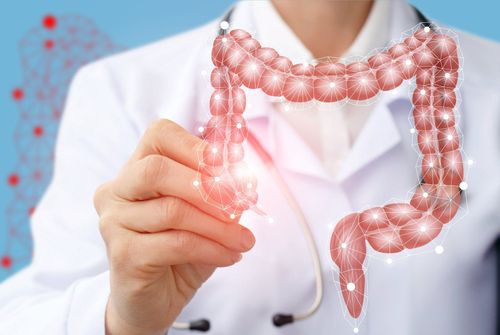This is an automatically translated article.
Due to many advantages such as high safety, less pain, less postoperative complications, laparoscopic surgery to remove pyelonephritis is the method commonly performed today.
1. The surgical methods of pyelonephritis
Pyelonephritis is one of the most common urinary tract diseases, the disease often occurs in men more than women, concentrated in the age group 30-55. The predisposing factors for the disease are due to unreasonable diet, too much protein, carbohydrates, sodium, oxalate, patients with urinary tract infections, living in tropical areas,... When the urinary stone is large It will gradually obstruct the circulation of urine, if not handled in time, it will lead to stagnation, obstruction, urinary tract infection, and gradual destruction of kidney structure.
To treat pyelonephritis, in the past, doctors often performed laparotomy to remove stones. Nowadays, less invasive methods such as extracorporeal lithotripsy, percutaneous lithotripsy, retrograde endoscopic lithotripsy, laparoscopic or retroperitoneal stone removal, ... have been performed instead. , to reduce pain, reduce complications after surgery for patients.
Laparoscopic surgery to remove pyelonephritis is a commonly performed method today, the doctor will open the renal pelvis to remove the stones laparoscopically through the peritoneum, the stones will be removed through the trocar hole.
2. In which cases is laparoscopic surgery to remove pyelonephritis indicated?
Laparoscopic surgery to remove pyelonephritis is indicated when the stone is larger than 2cm in diameter located in the renal pelvis in the intermediate position or outside the sinus. In addition, laparoscopic surgery to remove pyelonephritis can be combined with pyelonephritis and ureteral stricture in the following cases: patients with pyelonephritis accompanied by pyelonephritis syndrome ureter or ureter posterior to the inferior vena cava.
Laparoscopic surgery to remove pyelonephritis is not performed when:
The patient has contraindications to endotracheal anesthesia such as coronary artery disease, heart failure, chronic heart failure,... In the renal pelvis located in the sinus, pyelonephritis is associated with other urinary abnormalities such as vesicoureteral reflux or ureteral enlargement. Kidney stones cause fluid retention in the kidneys and loss of function. The patient has a narrowing of the urinary tract under the stone due to ureteral tumor, ureteral stenosis, retroperitoneal sclerosing inflammation, urinary tuberculosis. The patient has a history of previous transperitoneal surgery on the lateral abdominal wall. The patient has a local infection of the abdominal wall, a urinary tract infection that has not been treated.

Bệnh nhân suy tim không được chỉ định nội soi ổ bụng lấy sỏi bể thận
3. Steps of laparoscopic surgery to remove pyelonephritis
3.1. Before surgery
The patient will be given general tests and tests to evaluate kidney function, perform ultrasound, computed tomography of the urinary system, intravenous urogram to determine the characteristics of pyelonephritis, the cause. pathology or assessment of renal function. If necessary, radioisotope imaging will be performed to assess the degree of decrease or loss of kidney function.
The medical staff will explain to the patient and family the purpose of the surgery, possible complications after surgery. The medical record must contain the consent of the patient and family for surgery. For patients who are old, weak, exhausted, and anemic, they need to improve their health and stabilize before surgery.
3.2. Steps to perform laparoscopic surgery to remove pyelonephritis
After the patient is under endotracheal anesthesia, insert a urethral catheter. Surgeon made 1cm skin incision at umbilicus on lateral white line, small peritoneal opening, 10mm trocar was placed through the first opening, 12 mm Hg inflation, camera with 30 degree lens. The remaining two trocars include 1 5mm trocar placed between the iliac crest and costal margin above the midaxillary line, and 1 10mm trocar located below the costal margin on the white line. Once placed, 3 trocars will form an isosceles triangle.
After placing the trocar, the surgical team will expose the renal pelvis and remove the stones:
The surgeon opens the posterior peritoneal wall along the Toldt fascia, lowers the right colon angle, pushes the colon and duodenum in the middle, and lifts the liver. elevation (or possibly cutting the splenic-colon ligament), pushing the spleen and left colon inward. The doctor used laparoscopic hooks and clamps to dissect the pyelonephritis from the genital vessels to the lower pole of the kidney and the hilum to expose the anterior and inferior border of the renal pelvis. Separation of renal pelvis from adhesions to renal tubule vessels. Expose the renal pelvis with stones, use forceps to hold the stones in the renal pelvis, open the renal pelvis with a cold knife or endoscopic hook to remove the stones. Then, a suction pump washes the renal pelvis and removes small pieces of stone. The doctor checks the ureter circulation to the bladder and restores the renal pelvis. After removing kidney stones, if the patient has comorbidities such as posterior inferior vena cava or narrowing of the pyelonephritis - ureteral junction, the doctor may continue to perform surgery to reconstruct the renal pelvis and urinary tract. narrow management.
Before the end of the surgery, the doctor will examine the surgical area in the peritoneum. The intra-abdominal pressure will be reduced to less than 5mmHg to check for bleeding, drain the fluid, remove the pyelonephritis directly through the enlarged 10mm trocar hole or put it in a plastic bag. Withdraw the trocar and drain the surgical site with a catheter. After that, the patient was sutured to open the abdominal wall with the standard, put gauze, pressure bandage and repositioned.
3.3. Patient follow-up
During surgery, the patient will be closely monitored for pulse, arterial blood pressure, central venous pressure, blood loss, amount of blood to be transfused with O2 and CO2 concentrations.
After surgery, monitor postoperative bleeding through the amount and color of urine of the urethral catheter and drainage of the surgical site, hemodynamic status, abdominal pain and distention. Usually, the patient's bleeding will decrease after a few days of combined medical therapy, the urethral catheter is removed after 5 days.
4. Common complications in laparoscopic surgery to remove pyelonephritis
Common complications during surgery:
Tear of the pleura, perforation of diaphragm when poking Trocar close to the edge or during surgery. If this complication occurs, the doctor will stitch the pleura, diaphragm through endoscopic, combined with continuous suction pleural drainage. If laparoscopic surgery is not possible, it can be converted to open surgery. Bleeding due to damage to the inferior vena cava, genital veins due to dissection or slippage of the vascular clamp. If hemostasis cannot be treated endoscopically, he will be converted to open surgery. Injury to organs such as duodenum, colon, and small intestine during surgery will be converted to open surgery for treatment depending on the damage.

Sau quá trình mổ nội soi ổ bụng lấy sỏi bể thận có thể xảy ra tai biến
Common complications after surgery are:
Abdominal bleeding is much, cannot be stopped: the patient needs to be quickly re-operated to handle. Fluid collection or abscess in the abdomen: the doctor will conduct ultrasound or computed tomography to determine the location and size of the fluid collection, the abscess. If the fluid collects, the abscess is small and shallow, aspiration will be performed under ultrasound guidance. If the mass, abscess is large, deep site needs drainage or open surgery to clean. Patients with urinary leakage after surgery: the patient will be saved the urethral tube and treated medically. If after 1-2 weeks, the patient's condition does not improve, the patient will be re-inserted JJ catheter or re-intervention. Customers who need examination and treatment can directly visit Vinmec Health System nationwide or contact to make an appointment HERE.
SEE ALSO:
Smooth endoscopy "blowing away" a "big" kidney stone.
Vinmec - Endoscopic laser lithotripsy with flexible bronchoscope eliminates stones up to 2.5 cm













